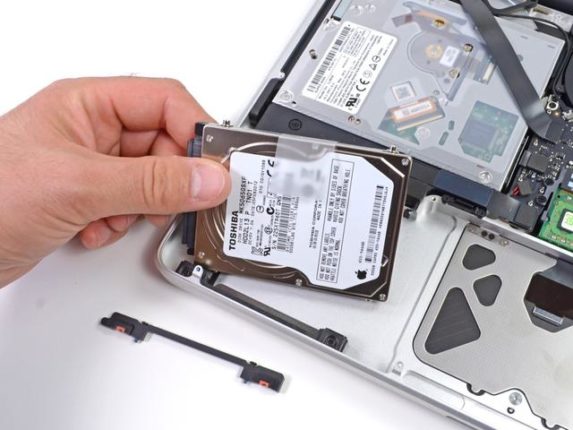
Then you pull out the old drive, slide in the new drive, and replace the cover. Typically, there is only one screw to remove that releases a cover over the hard drive bay. They generally come with only one hard drive to save space and weight. For help with partitioning, see my companion article on Partition Managers. Partition and format your new hard drive, if necessary. Carefully line up the holes in the sides of the carrier or drive case with the holes through which the securing screws go. Slide the new hard drive into an empty slot in the rack. ("Auto-discover" means the computer will detect whether a drive is the master or slave automatically.) If the jumper positions are not spelled on the label, or the accompanying documentation, a bit of Googling should help you find the correct settings for your drive. Illustrations of the correct jumper placements for master, slave, and "auto-discover" are generally printed on a hard drive. But if the drive you are replacing is a secondary or "slave" drive, then you will have to pry up tiny plastic blocks called jumpers and move them around to cover specific pairs of pins in an array of pins. Older IDE hard drives come with their jumpers pre-set to be the "master" or boot drive. If you have only one hard drive, or if your computer uses modern SATA hard drives, you can probably skip this step. If necessary, remove the old hard drive from its carrier and screw the new hard drive into the carrier. The path to the removal of the hard drive should become clear. Re-examine the case, frame and all the screws that hold things together.

If you find yourself tempted to employ a crowbar, sledgehammer, or any power tools, take a few deep breaths. But you should never need more than a screwdriver to do the job. In some cases, especially the compact desktop models that sit flat on the desk, the components are packed pretty tightly, and you may have to remove a retaining bar to gain access to the hard drive. Slide the old hard drive out of the rack, exerting steady pressure from the front of the case and pulling on the sides of the hard drive from the rear. Put the screws in a small cup or tape them together so none gets lost. Use the right size screwdriver to remove these tiny screws if you strip them, your new hard drive will not be secured reliably. The old hard drive or its carrier will be secured to the rack by small screws on the rack's sides. If your current hard drive is 3-1/2 inches wide, it may be in a carrier that you can reuse. If you have 5-1/4 inch drive bays, make sure that the new hard drive you buy comes with a 5-1/4 inch carrier - a metal adapter frame into which the 3-1/2 inch drive can be secured and whose external sides fit the 5-1/4 inch drive bay perfectly. However, most hard drives today are only 3-1/2 inches wide. Some desktop computers have drive bays that are 5-1/4 inch wide. The drive bay is the slot in a short rack inside of your computer into which a hard drive and its carrier (if any) fits. Need we mention that you should unplug the whole computer from the wall electrical outlet first?įor a desktop computer, the size of the drive bay is important to note. Unplug both from the drive, and move them out of the way. The power cable will be a connector and a foursome of wires which you can follow back to the power supply. The data cable can be traced to a connector on the motherboard. The data cable may be a wide, flat grey ribbon cable or a modern, slim SATA cable that has a telephone-style clip jack on its end.


Next, unplug the data cable and power cable from the old hard drive. Once these are removed, you can slide the case off easily. Most cases are secured with Phillips head screw-nuts at the back of the case. To remove the old hard drive from a desktop computer you will first have to open the system unit case.


 0 kommentar(er)
0 kommentar(er)
